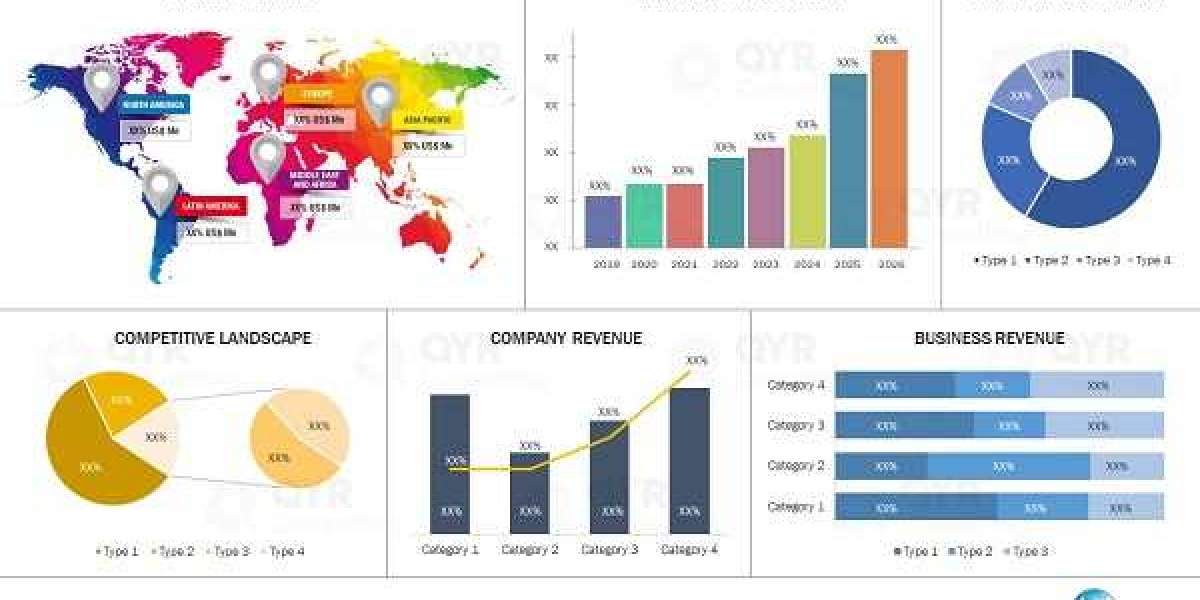OFFICIAL SITE==►►CLICK HERE TO GO
MORE INFORMATION==►►CLICK HERE TO GO
╰┈➤❗❗Shop Now❗❗╰┈➤
https://globalizewealth.com/buy-clarity-bloom-cbd-gummies
Clarity Bloom CBD Gummies - In a world where stress and anxiety seem to be constant companions, finding natural ways to promote wellness and tranquility is more important than ever. Enter Clarity Bloom CBD Gummies, a revolutionary product crafted with the purest ingredients from nature's bounty. In this comprehensive guide, we delve deep into the Clarity Bloom CBD Gummies world, exploring their origins, benefits, and how they can enhance your overall well-being.
╰┈➤ Product Name:⇢ Clarity Bloom CBD Gummies
╰┈➤ Benefits:⇢ Anxiety, Pain, and Stress
╰┈➤ Rating:⇢ ★★★★★(4.9)
╰┈➤ Availability:⇢ In Stock Voted #1 Product in the US
Clarity Bloom CBD Gummies- CBD products are gaining immense popularity because of their potential to offer various health benefits, from reducing stress to alleviating pain. Clarity Bloom CBD Gummies are one such product, designed to provide the therapeutic effects of CBD in a convenient, tasty, and easy-to-consume form. In this article, we will explore the details of Clarity Bloom CBD Gummies, including their ingredients, potential benefits, customer reviews, and any possible drawbacks.
What Are Clarity Bloom CBD Gummies?
Clarity Bloom CBD Gummies are infused with cannabidiol (CBD), a natural compound derived from hemp. These gummies are an edible supplement that offers a non-psychoactive way to experience the benefits of CBD without the "high" associated with THC, the psychoactive compound found in marijuana. Clarity Bloom CBD Gummies are marketed as a solution for those seeking relief from anxiety, chronic pain, and sleep disturbances, offering a convenient way to consume CBD without the need for oils or tinctures.
The Science Behind Clarity Bloom CBD Gummies and Potential
CBD, short for cannabidiol, is a naturally occurring compound found in the cannabis plant. Unlike its counterpart THC, CBD is non-psychoactive, meaning it doesn't induce a "high" sensation commonly associated with cannabis consumption. Instead, CBD interacts with the body's endocannabinoid system, a complex network of receptors responsible for regulating various physiological processes, including mood, sleep, pain perception, and immune function. By modulating the activity of these receptors, CBD has been shown to exert a wide range of therapeutic effects, from reducing anxiety and stress to alleviating chronic pain and inflammation.
(OFFICIAL WEBSITE) Click Here to Buy From The Official Website
Key Ingredients Of Clarity Bloom CBD Gummies
Clarity Bloom CBD Gummies are formulated with high-quality, organic ingredients that ensure the consumer gets the maximum benefit from CBD. The main components include:
CBD Extract: The primary ingredient, extracted from organically grown hemp, ensures that users receive the therapeutic benefits of CBD without any THC content.
Organic Sweeteners: Natural sweeteners such as organic cane sugar and fruit extracts are used to give the gummies a pleasant taste.
Natural Flavors and Colors: To enhance the flavor and appeal of the gummies, they are infused with natural fruit flavors and colors.
Pectin: A plant-based gelling agent that makes these gummies vegan-friendly and provides them with a chewy texture.
How Clarity Bloom CBD Gummies Work?
Clarity Bloom CBD Gummies are good for the health of your gut and immune system. They also help ease pain, improve brain function, and help you sleep when you can't. So, it saves the body from the damage and stress caused by oxidative stress. It also helps people with constant pain because it reduces inflammation all over the body. The main parts of the vitamin lubricate the joints and make them more flexible. Clarity Bloom CBD Gummies is great for anyone who works out, including athletes and people who love the gym. The chewy candies will make you stronger and keep your muscles from getting tired while you work out. It also helps your muscles heal, so you can keep going about your day.
Benefits of Clarity Bloom CBD Gummies
Stress and Anxiety Relief: One of the most common uses of CBD is for stress and anxiety management. Many users of Clarity Bloom CBD Gummies report feeling calmer and more relaxed after consuming them, making these gummies an effective tool for those dealing with anxiety or stress.
Pain Management: CBD is well-known for its anti-inflammatory properties, and Clarity Bloom CBD Gummies may help reduce pain and inflammation. Whether it's chronic pain, arthritis, or muscle soreness, these gummies can provide relief.
Improved Sleep Quality: Users suffering from sleep disorders, such as insomnia or restless sleep, may find Clarity Bloom CBD Gummies beneficial. Many customers report improved sleep patterns, falling asleep faster, and experiencing deeper sleep after using these gummies.
Convenience and Discreetness: These gummies offer a discreet and easy way to consume CBD, without the need for measuring doses or carrying around a bottle of oil. They're portable and can be taken on the go.
Non-Psychoactive: Since Clarity Bloom CBD Gummies are made from hemp-extracted CBD and contain no THC, they do not produce any psychoactive effects, making them a safe option for those looking for the medicinal benefits of CBD without getting high.
Order Clarity Bloom CBD Gummies Right Here With the Best Prices!
How To Use Clarity Bloom CBD Gummies?
Clarity Bloom CBD Gummies have garnered tremendous attention, partially because of their herbal composition and suggested fitness benefits. Formulated from natural hemp seed oil, those gummies comprise essential fatty acids like linoleic acid, alpha-linolenic acid, and gamma-linolenic acid, which are essential for human health. Users have shared fantastic stories, praising the product for its ease of use, terrific taste, and short delivery.
Testimonials advocate upgrades in typical well-being without the psychoactive outcomes associated with THC or CBD. Additionally, the gummies undergo rigorous testing for safety, making sure no presence of heavy metals, residual solvents, or pesticides. With a balanced omega-6 to omega-3 fatty acid ratio, those gummies contribute to a more fit weight loss plan. While personal effects might also vary, the robust clinical backing and overwhelmingly positive user comments imply that Clarity Bloom CBD Gummies may be an effective, non-habit-forming complement for day-by-day use.
Usage Guidelines
When incorporating Clarity Bloom CBD Gummies into your daily routine, it is important to follow certain guidelines to ensure optimal results.
Dosage Recommendations
Start with a low dosage and gradually increase until you find your ideal dosage.
The recommended daily dosage of Clarity Bloom CBD Gummies may vary depending on your individual needs and tolerance.
Before beginning any new supplement regimen, especially if you are taking medication or have underlying health conditions, see a healthcare provider.
Timing and Frequency
Clarity Bloom CBD Gummies can be consumed at any time of the day.
For best results, it is recommended to take Clarity Bloom CBD Gummies consistently daily.
Incorporate them into your daily routine to experience the full benefits of CBD.
Customer Reviews
Real-Life Experiences Many users have shared their positive experiences with Clarity Bloom CBD Gummies, citing improvements in various areas of their health and well-being. These testimonials serve as valuable insights into the potential benefits of CBD products.
Success Stories From pain relief to better sleep, customers have reported a wide range of benefits from incorporating Clarity Bloom CBD Gummies into their daily routine. These success stories highlight the transformative power of natural wellness solutions.
Clarity Bloom CBD Gummies have garnered a largely positive response from users. Here’s a breakdown of common themes found in customer reviews:
Effectiveness: Many users praise the product for its quick relief from anxiety and pain, as well as improvements in sleep quality. Customers appreciate the noticeable effects of the gummies in helping them manage their day-to-day discomforts.
Taste and Texture: Users have highlighted the gummies' pleasant taste and chewy texture, making them an enjoyable and easy supplement to include in their daily routine.
Ease of Use: Consumers find the gummy format more convenient compared to other CBD products like oils or capsules, citing the simplicity of consuming a predetermined dose.
Non-Drowsy Effect: Despite promoting relaxation and better sleep, several users have mentioned that the gummies don’t make them feel drowsy during the day, allowing them to maintain focus and energy.
(OFFICIAL WEBSITE) Click Here to Buy From The Official Website
Potential Drawbacks
Price: Some customers have noted that Clarity Bloom CBD Gummies are priced higher than other CBD gummy products on the market. While the quality and effectiveness are generally well-regarded, the cost may be a limiting factor for some consumers.
Variable Effects: As with any CBD product, the effects of Clarity Bloom CBD Gummies can vary from person to person. Some users may need to adjust their dosage or be more patient in waiting for results.
Availability: Depending on location, Clarity Bloom CBD Gummies might not be available in all stores, making online ordering the most practical option for many users.
Is Clarity Bloom CBD Gummies FDA Approved?
Clarity Bloom CBD Gummies are advertised as a secure, non-addiction-forming, and effective hemp seed oil dietary supplement. Still, they've not been evaluated with the aid of the U.S. Food and Drug Administration (FDA). While the manufacturers emphasize rigorous trying out for prison compliance and compound protection, which include tests for 0% CBD and THC content, heavy metals, residual solvents, mycotoxins, microbial contaminants, and insecticides, it’s essential to observe the absence of FDA endorsement.
The product is licensed via Good Manufacturing Practices (GMP), indicating a superb fashion within the supplement enterprise. However, without FDA evaluation, the claims regarding its health advantages and protection are primarily based on inner and third-party checking out instead of regulatory approval. Consumers need to consider this while shopping and seek advice from healthcare companies for medical advice.
Where to buy Clarity Bloom CBD Gummies?
As of my last knowledge update in September 2021, CBD products, including Clarity Bloom CBD Gummies, can be purchased from a variety of sources, both online and in physical stores. Here are some common places where you might find Clarity Bloom CBD Gummies only go for the actual Official Site.
Conclusion
Clarity Bloom CBD Gummies offer a convenient and effective way to incorporate the potential benefits of CBD into your daily routine. With a focus on stress relief, pain management, and improved sleep, these gummies have earned positive reviews for their taste, ease of use, and effectiveness. While they may be priced higher than some alternatives, the quality of ingredients and the benefits provided seem to justify the cost for many users.
Order Clarity Bloom CBD Gummies Right Here With the Best Prices!
https://www.facebook.com/people/Clarity-Bloom-CBD-Gummies/61569300545495/
https://www.facebook.com/groups/claritybloomcbdgummiesorder
https://www.facebook.com/ClarityBloomCBDGummiesOrder/
https://www.facebook.com/events/351937338002093/
https://www.italki.com/en/post/ZjkM4UctBxhHuPgktgrth9
https://www.italki.com/en/post/ZjkM4UctBxhHuPgktgrtld
https://eventprime.co/o/claritybloomcbdgummyusa
https://colab.research.google.com/drive/12nf_rKaXWYLU6ZNFSCqfy28aGJshTr31
https://colab.research.google.com/drive/1pRIw5p0eqBY6DpzJiMcGif54r1OWfa0A
https://colab.research.google.com/drive/1tnvecTcUXyXLb0RAsFpme3eFrjhzgXJl
https://hasster.com/blogs/62817/Clarity-Bloom-CBD-Gummies-Improve-Health-Help-in-Pain-Relief
https://hasster.com/blogs/62818/Clarity-Bloom-CBD-Gummies-Treatment-For-Anxiety-Stress
https://sikatpinoy.net/threads/clarity-bloom-cbd-gummies-get-instant-relief-from-pain.3851/
https://sikatpinoy.net/threads/clarity-bloom-cbd-gummies-relief-anxiety-stress-joint-pain.3853/
https://clarity-bloom-cbd-gummies-usa.jimdosite.com/
https://clarity-bloom-cbd-gummies-amazon.jimdosite.com/
https://claritybloomcbdgummiesofficia2.godaddysites.com/
https://claritybloomcbdgummies70.godaddysites.com/
https://clarity-bloom-cbd-gummies-amazon.mywebselfsite.net/
https://clarity-bloom-cbd-gummies-usa-157ad1.webflow.io/
https://www.pinterest.com/pin/1117807570022487513/
https://www.pinterest.com/pin/1117807570022487526/
https://sites.google.com/view/claritybloomcbdgummiesrevierws/
https://sites.google.com/view/claritybloomcbdgummiesus/
https://claritybloomcbdgummiesus.blogspot.com/2024/11/clarity-bloom-cbd-gummies-reviews.html
https://topcbdsupplementnews.blogspot.com/2024/11/clarity-bloom-cbd-gummies-trusted-or.html
https://flipbooklets.com/pdfflipbooklets/clarity-bloom-cbd-gummies-powerfull-pain-relief-gummies
https://groups.google.com/g/clarity-bloom-cbd-gummies-us/c/6dQbykfNxXg
https://groups.google.com/g/clarity-bloom-cbd-gummies-us/c/cxdV3m5EJF8
https://heyzine.com/flip-book/976900f21c.html
https://heyzine.com/flip-book/bd7c3541cf.html











